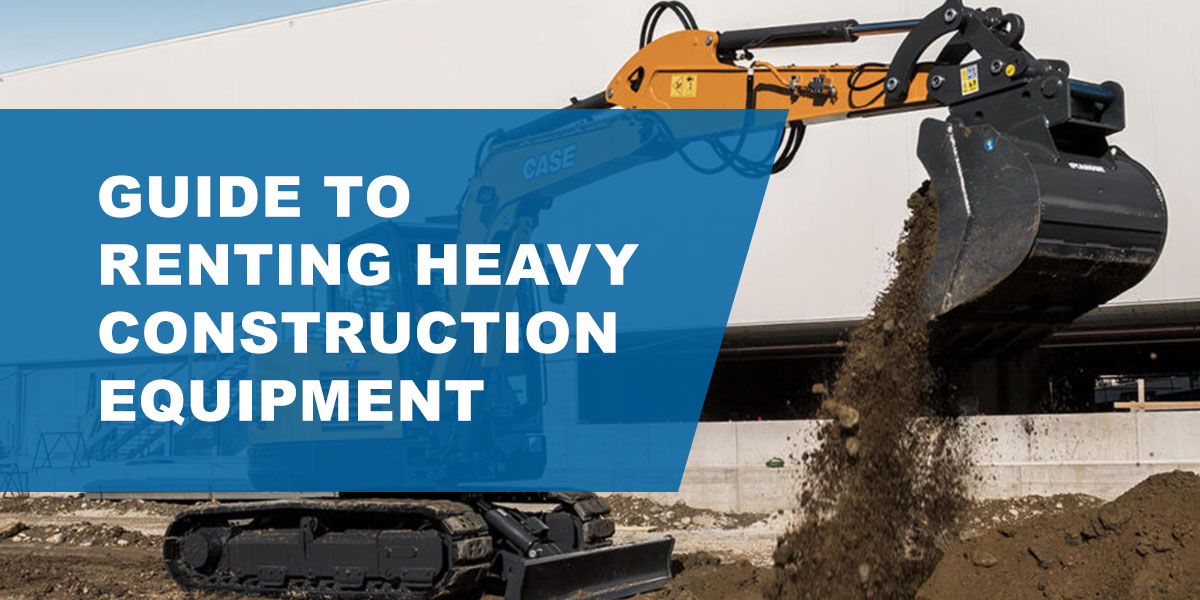Construction Equipment Rentals: Sturdy Machinery for Your Tasks
Construction Equipment Rentals: Sturdy Machinery for Your Tasks
Blog Article
Optimize Your Budget Plan by Understanding the Prices Connected With Building Equipment Services
Recognizing the full extent of costs connected with building and construction equipment leasings is crucial for maximizing your budget plan. What approaches can be employed to successfully take care of these costs and make sure an extra reliable rental experience?
Review of Rental Expenses
When considering building and construction equipment services, understanding the linked costs is extremely important for efficient budgeting and project planning. Rental prices can vary dramatically based on numerous elements, consisting of equipment type, period of rental, and place. The first rental charge usually shows the tools's market demand and its connected functional capacities, affecting the overall cost.
Along with the base rental rate, secondary prices may emerge, such as transportation charges, gas additional charges, and maintenance fees. It is crucial to account for these extra expenditures to accurately evaluate the overall price of renting equipment. The rental period can impact pricing; longer leasings may certify for reduced prices, while temporary rentals could sustain greater daily costs.

Breakdown of Rental Prices
A comprehensive understanding of rental rates is important for professionals and project managers intending to maximize their budget plans. Rental rates for construction equipment typically are composed of numerous elements, including base rates, time-based costs, and usage fees.
Base prices are the core costs connected with the rental of the tools, usually figured out by the type and size of the equipment. These rates can vary dramatically, affected by elements such as equipment need, accessibility, and local market patterns. Time-based charges, which might be daily, weekly, or monthly, serve to suit various project timelines and rental periods.
Furthermore, rental prices may include use fees, which apply when devices is used past a specified limit, making sure that the rental company can make up wear and tear. Seasonal need variations can likewise influence rental rates, with peak construction seasons typically regulating greater prices.
Additionally, understanding the rental firm's policies relating to maintenance and insurance coverage can provide additional understanding into the general cost structure. By assessing these elements, service providers can make educated choices, ensuring the choice of rental tools aligns with both project demands and spending plan constraints.
Additional Fees to Think About
Comprehending the details of added costs is essential for specialists to handle their total service expenditures properly. Past the typical rental rates, various supplemental fees can substantially impact the total cost of tools service. These costs usually consist of distribution and pick-up fees, which can vary based on distance and logistics involved in transferring the equipment to and from the job website.
In addition, some rental firms might impose fuel over at this website additional charges if the tools is returned with much less fuel than when rented. It is also necessary to know possible cleansing charges, especially for specialized equipment that calls for complete maintenance after use.

Thoroughly assessing the rental contract and clarifying these added charges ahead of time can assist professionals guarantee and avoid unforeseen costs that budget plans remain undamaged throughout the project lifecycle.
Upkeep and Repair Expenditures
Regular repair and maintenance expenses are often ignored factors that can dramatically influence the general price of building tools rentals. When leasing tools, it is important to take into consideration not only the rental charges however additionally the prospective expenses related to keeping the machinery in optimum operating condition.
Numerous rental firms consist of basic maintenance as component of the rental arrangement; however, much more unanticipated breakdowns or comprehensive repair services can bring about added expenses. It's necessary to examine the rental agreement meticulously to recognize what upkeep solutions are covered and what responsibilities fall on the renter.
Additionally, devices that is not well-kept can cause inadequacies on the work website, possibly creating hold-ups and raising project costs. To mitigate these risks, it is advisable to conduct normal examinations and preserve open communication with the rental copyright pertaining to any problems that arise during usage.
Insurance Policy and Responsibility Expenses
Insurance coverage and obligation costs are crucial components that can significantly influence the total cost of construction equipment services (aerial lift rental). These expenses guarantee that both the rental company and the customer are safeguarded from potential economic losses occurring from accidents, damages, or theft throughout the rental period

Furthermore, customers ought to recognize any type of deductibles or exemptions in the insurance coverage, as these can influence potential out-of-pocket costs. Recognizing the terms and conditions of any kind of insurance coverage is crucial to avoid unforeseen prices. Ultimately, budgeting for insurance coverage and responsibility expenses can help make sure a smoother rental experience and shield against monetary dangers related to construction jobs.
Final Thought
In verdict, a comprehensive understanding of the expenses connected with building and construction equipment rentals is vital for reliable budget plan management. By evaluating rental prices, added charges, upkeep expenditures, and insurance individuals, demands and organizations can minimize unexpected expenditures. This strategic approach not only enhances cost-effectiveness however likewise guarantees that jobs progress smoothly and efficiently. Inevitably, educated decision-making pertaining to tools leasings adds to the general success of construction endeavors.
Rental expenses can vary dramatically based on numerous elements, including tools type, period of leasing, and location (scissor lift rental). The rental period can influence pricing; longer services may certify for reduced prices, while short-term services may sustain higher day-to-day fees
By conducting detailed research study and involving with credible rental companies, service providers can efficiently browse the complexities of rental prices, ultimately maximizing their economic resources.
Past the standard rental rates, numerous supplemental costs can considerably influence the total expense of tools rental. Rental business construction equipment shipping usually offer obligation insurance policy that covers injuries to third parties or damage to building, while devices damages insurance policy can cover the expense of repair services or replacement if the leased devices is harmed.
Report this page